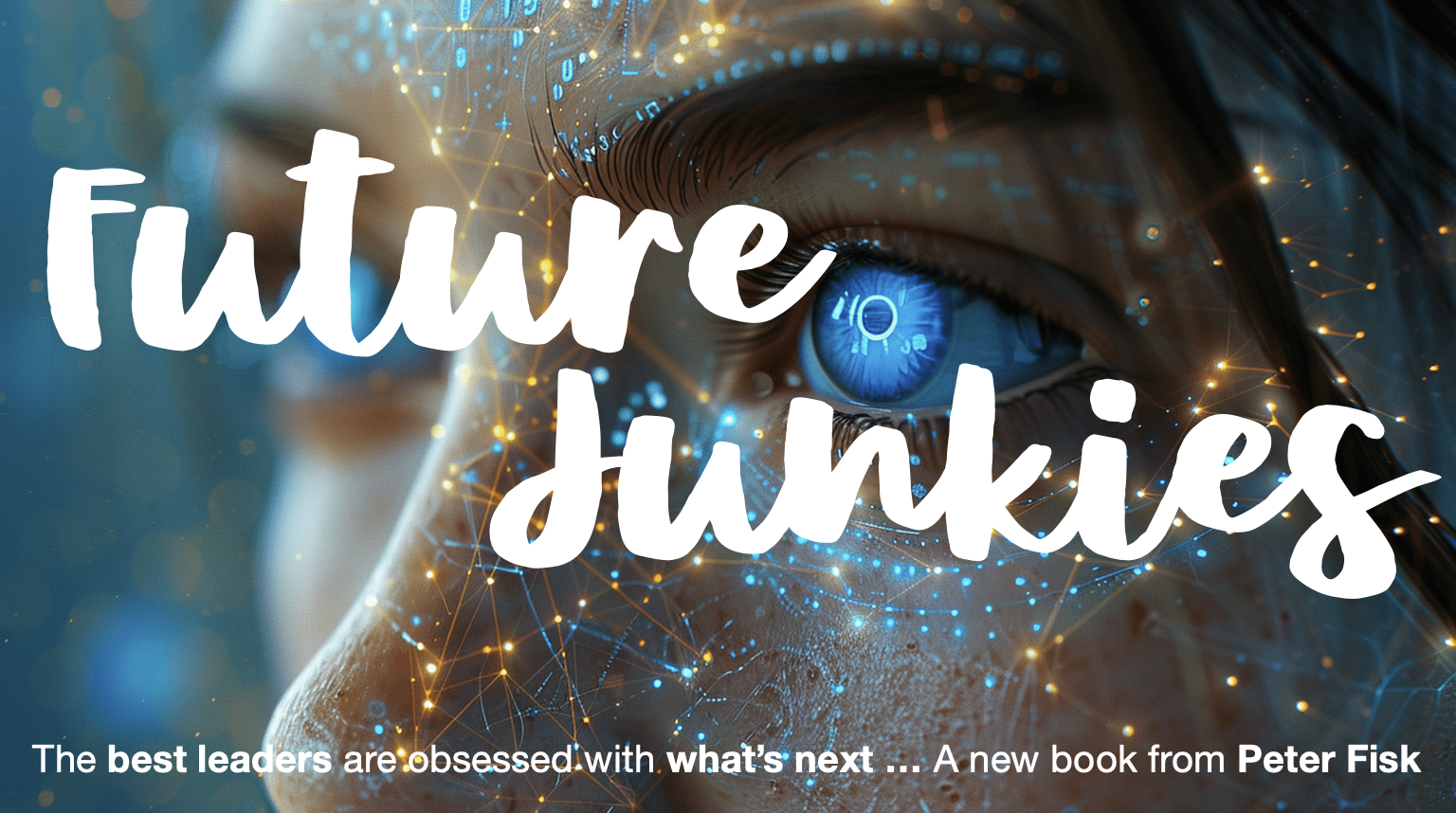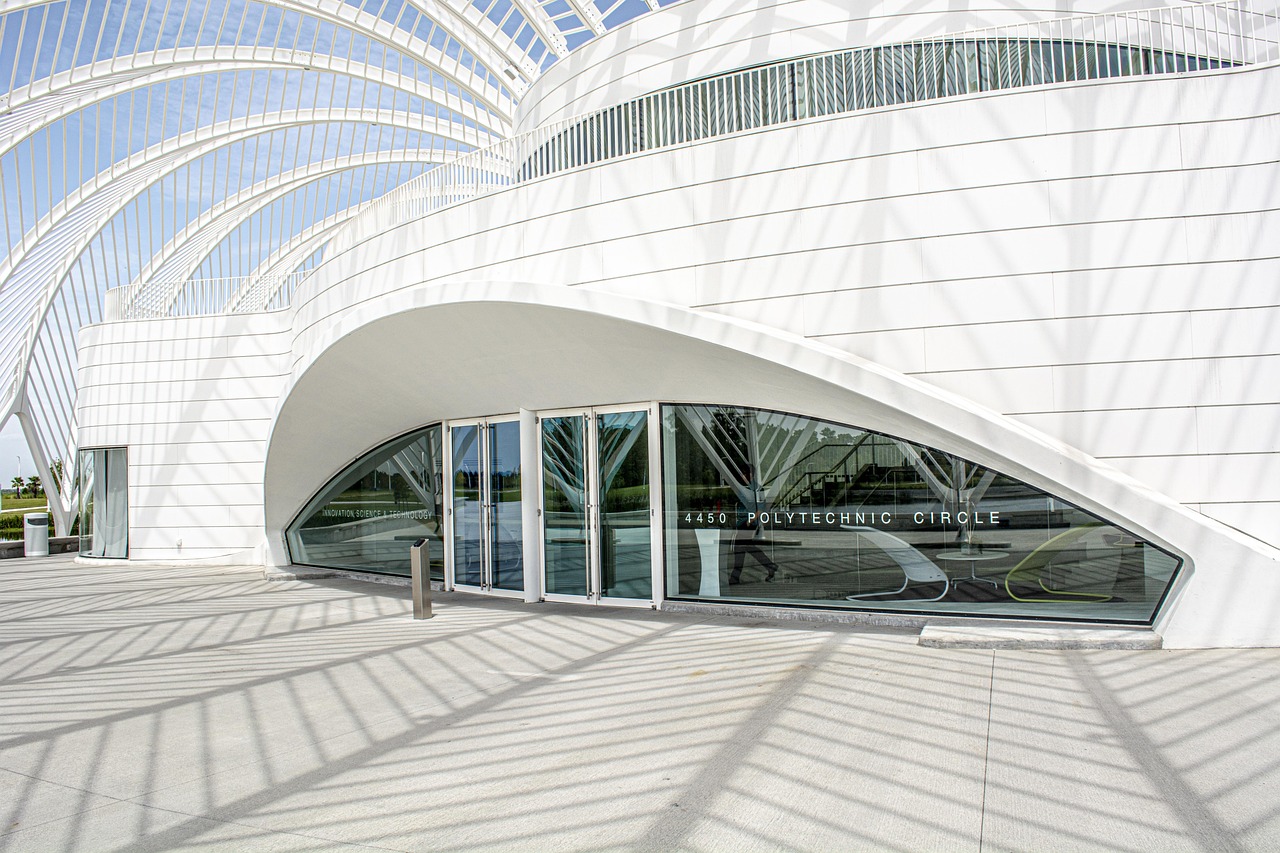Future Junkies … the best leaders are obsessed with what’s next … addicted to ideas, guided by purpose, inspired by technologies … turning challenges into opportunities, accelerating possibilities into progress
June 16, 2025

In a world defined by relentless change and rising complexity, a new breed of businesses is emerging—ambitious, restless, and unapologetically visionary.
These are the Future Junkies—companies addicted to possibility, obsessed with the edges of tomorrow, and committed to turning what’s possible into what’s next. They don’t just chase trends—they shape the future, pioneering radical innovations that reinvent markets, solve global challenges, and unlock extraordinary value.
Moonshot thinking—once the realm of sci-fi dreamers and NASA engineers—is now the strategic DNA of the most disruptive and admired companies. Alphabet’s X (formerly Google X), Tesla, OpenAI, SpaceX, DeepMind, Moderna, and ambitious upstarts like Anduril, Neuralink, and Twelve are bold exemplars of this mindset.
These businesses are defined by their drive to achieve 10x improvements over 10% gains. They ask “Why not?” instead of “What if?”, and challenge the limits of what’s considered feasible—whether by launching reusable rockets, eradicating disease, creating human-AI symbiosis, or designing carbon-negative fuels.

Anatomy of a “Future Junkie”
1. Purpose-driven, possibility-fuelled: At the heart of a moonshot business lies an audacious purpose—a conviction that business can, and must, solve humanity’s greatest challenges. From reversing climate change to decoding the brain, these companies fuse commercial ambition with mission-driven resolve. For example, DeepMind’s stated goal is to “solve intelligence, and then use that to solve everything else.” It’s not simply about building AI; it’s about unlocking a better future for all.
2. Embracing tech intelligence and convergence: Future Junkies thrive at the intersection of exponential technologies. They don’t just use AI or robotics or biotech in isolation—they combine them to unlock nonlinear breakthroughs. Tesla merges batteries, software, and machine learning to redefine transport. Moderna fused genomics, nanotech, and cloud computing to accelerate vaccine development during the COVID-19 pandemic. And companies like Commonwealth Fusion Systems are betting on fusion energy by blending superconductors, quantum simulations, and advanced manufacturing.
3. Designing for disruption, powered by relentless reinvention: These companies aren’t looking to compete within existing frameworks—they aim to destroy and reframe them. They ask, “If we started from scratch, how would we design this system today?” Stripe reinvented online payments by creating infrastructure for the internet economy. Neuralink seeks to rewire the human brain to interface directly with machines. Future Junkies don’t improve—they revolutionize.

Cultures that stretch reality
The culture within these moonshot organizations is unlike traditional companies. It is deliberately engineered to foster imagination, experimentation, and fearless execution.
Curiosity over conformity: Moonshot companies are led by polymaths, futurists, and mavericks. They actively seek out iconoclasts who ask different questions, often valuing science fiction and philosophy as much as engineering and economics. At X, failure is not punished—it’s celebrated, so long as it’s in pursuit of learning. By embracing failure as a learning tool, they remove the fear that stifles innovation in legacy firms.
Speed as a strategy: These companies move fast not just to be first, but to collapse time-to-impact. Speed accelerates learning, iterates feedback loops, and forces prioritization. SpaceX’s rapid launch failures enabled it to outpace entrenched aerospace competitors. Future Junkies embrace minimum viable products, parallel experimentation, and agile structures that privilege movement over perfection.
Ambidextrous structures: They often build “dual-speed” organisations—balancing core operations with moonshot explorations. Alphabet’s core business of ads and search fuels long-term bets via X, CapitalG, and GV. Similarly, Amazon built AWS and Alexa while still refining its retail model. This duality allows exploration without destabilizing execution.

Why the best leaders are Future Junkies
We live in a world of relentless acceleration. Every day brings fresh disruption, new breakthroughs, and rising uncertainty. Technologies evolve exponentially. Markets shift in moments. Social and environmental challenges grow more complex and urgent. In this high-velocity world, the old playbooks no longer work. Yesterday’s logic breaks under tomorrow’s pressure.
Enter the Future Junkie: a new breed of business leader obsessed with what comes next. Future Junkies aren’t content to merely adapt to change; they crave it. They are restless, curious, and deeply committed to crafting better futures. They are not defined by their industry, geography, or age, but by their mindset. They see opportunity in challenge, imagination in ambiguity, and purpose in uncertainty.
This book explores the ideas, strategies, and leadership practices of Future Junkies across the world. It’s a guide for anyone who wants to stop reacting to change and start shaping it. You’ll meet bold entrepreneurs, visionary CEOs, and pioneering innovators—people like Elon Musk, Satya Nadella, Melanie Perkins, Lei Jun, and Jessica Jackley—who are rewriting the rules of business. And you’ll explore tools and frameworks to help you build your own futurecrafting discipline.
Future Junkies are not reckless optimists. They are rigorous visionaries. They don’t just dream—they build. They transform ideas into experiments, and experiments into progress. They challenge convention, embrace ambiguity, and mobilise communities. And they never stop asking: what’s next?
This is not just a book about trends. It’s about transformation. It’s about designing businesses, cultures, and strategies for the future—on purpose. Because in an age of uncertainty, the greatest risk is to do nothing.
Welcome to the movement. Welcome to the age of the Future Junkie.
Always what’s next
Future Junkies see the world differently. While most leaders focus on optimising the present, they are already building what comes after. This mindset—what we might call strategic impatience—fuels their actions. The horizon is not a distant place; it is a current project.
Why do they think this way? Because they know that stability is an illusion. The businesses that dominated the last century—built on scale, control, and efficiency—are being displaced by those driven by ideas, ecosystems, and adaptability. In this context, the ability to see, shape, and seize the future is the ultimate competitive edge.
Consider Elon Musk, perhaps the most high-profile Future Junkie. His companies aren’t built to maintain the status quo; they exist to bend the arc of possibility. Tesla didn’t just build electric cars—it redefined the automotive sector. SpaceX didn’t just launch rockets—it made space travel a public-private ambition. Musk’s obsession with the future isn’t an eccentric trait; it’s a strategic advantage.
But you don’t have to be Musk to think this way. Jessica Jackley saw a broken financial system and created Kiva, enabling peer-to-peer microloans that reimagined access to capital for underserved communities. Lei Jun built Xiaomi not as a hardware company, but as an ecosystem of digital experiences, combining affordability with community-driven innovation. Satya Nadella turned Microsoft from a product-centric behemoth into a purpose-led platform company focused on cloud, AI, and empowering others.
What these leaders share is an ability to see cracks in the present and design businesses that can grow through and beyond them.
Future Junkies are not content with best practices. They pursue next practices. They don’t just scale what works; they explore what could work better. This doesn’t mean they ignore reality—it means they redefine it.
They ask different questions:
-
What is the change no one sees coming?
-
How might we reinvent this from the ground up?
-
Who else could we create this future with?
-
What would make this 10x better, not just 10%?
They also operate across time horizons. They manage the present while experimenting with the future. They set bold visions but iterate quickly. They are system thinkers and story builders. And they are deeply driven by purpose: not just what they want to achieve, but why it matters.
Future Junkies share three key traits:
-
Curiosity – They actively seek emerging signals, question assumptions, and explore the unknown. They are information omnivores, constantly scanning for what’s next in technology, design, society, and culture.
-
Imagination – They don’t simply accept the future—they create it. They visualise what could be, and then work backward to make it possible. They blend storytelling with strategic insight to generate momentum.
-
Courage – They make bold moves. They are not afraid to invest in moonshots, challenge orthodoxy, or commit to paths with uncertain outcomes. They understand that progress demands risk.
This is your invitation to shift your lens. Don’t just ask, “How do we compete today?” Ask, “What future do we want to lead?” Because the best way to predict the future is no longer to forecast it. It’s to build it.

Leaders with a future mindset
Sam Altman thrives on long bets. Whether through Y Combinator, OpenAI, or Worldcoin, his work revolves around scaling what others don’t yet understand. His drive? To make sure the future of AI is a collective good. He pushes boundaries while deeply engaging with ethics, society, and policy. Yet at the same time, he recognises that commercial organisations can do this best, sustained innovation requires serious investment, and demands the best talent, but can ultimately create value for all stakeholders, including the progress of society. Altman believes leadership is responsibility at scale — a future junkie with deep moral inquiry and bold execution.
Jessica Jackley didn’t start with money — she started with stories. After witnessing the economic challenges of Ugandan entrepreneurs, she reimagined finance as a tool for dignity. That idea became Kiva, a peer-to-peer microlending platform that turned charity into collaboration. Jackley’s boldness came from a deep belief: that ordinary people could fuel extraordinary impact. She made finance personal and emotional, blending social justice, tech, and storytelling. Kiva wasn’t built to disrupt banking; it was built to restore humanity to capital. Jackley proves that future junkies don’t always chase the latest tech — they build new paradigms that reshape human relationships.
Jensen Huang’s future obsession began with gaming but exploded into AI. At Nvidia he reimagined graphics chips as general-purpose processors for deep learning, a gamble that made it the most valuable chipmaker in the world. Huang is both visionary and grounded — he sees 10 years ahead, then builds it piece by piece. He invests in ecosystems, not just products, and runs the company like a lab: bold hypotheses, fast iteration, relentless feedback. He leads with an engineer’s mind and a philosopher’s soul — constantly asking how can this solve bigger problems?
Melanie Perkins started with a frustration — how hard it was for students to design simple yearbooks — and turned it into a multi-billion-dollar vision. Driven by the idea that creativity should be accessible to everyone, she relentlessly simplified design and built Canva into a global visual storytelling platform. Her boldness is quiet but fierce — rooted in purpose, trust in her team, and a commitment to long-term impact. With each product, she asks: How does this empower people? Perkins is a future junkie with humility — showing that visionary leadership doesn’t require loudness, just clarity and resolve.
Lei Jun built Xiaomi not just as a smartphone company, but as a fast-moving innovation ecosystem. Inspired by Steve Jobs, he fused bold design, open feedback loops, and community co-creation. What makes Lei a future junkie is his obsession with speed, simplicity, and scale — releasing new products in weeks, gathering real-time user input, and launching ecosystem businesses from air purifiers to electric cars. His “Internet thinking” approach disrupted the hardware world by treating everything as software — iterative, responsive, and user-driven. Driven by a belief in accessible innovation for all, he made cutting-edge tech radically affordable and scaled Xiaomi into a global tech powerhouse in under a decade.
Future Junkies as business leaders share some common traits:
- A personal spark … Frustration, curiosity, loss, or ambition triggers a bigger vision
- Systems thinking … They see connections others don’t — across industries, ideas, and time
- Bold simplicity … They make complex things usable, human, and scalable
- Purpose-led ambition … Their ideas are tied to solving real problems, not just making money
- Future-back mindset … They start with what’s possible, then build the path toward it
- Action-oriented culture … They foster environments that move fast, test ideas, and evolve constantly

Funding the future
Moonshots are expensive, risky, and often unprofitable for years. But Future Junkies are backed by patient capital and bold investors who understand that asymmetric returns lie in outsized ambition. Venture capital is now complemented by venture studios, corporate incubators, sovereign wealth funds, and mission-driven capitalists.
Jeff Bezos invested billions into Blue Origin with a 100-year vision. Sam Altman raised the OpenAI Startup Fund to build AGI-ready businesses. Bill Gates’ Breakthrough Energy Ventures backs science-heavy companies with decade-long timelines. This kind of capital understands that real value isn’t always immediate, but compounding.
Moreover, some companies develop self-funding loops—where today’s products generate cash to fund tomorrow’s bets. Apple’s dominance in devices allows investment in spatial computing and health diagnostics. Elon Musk’s approach is to build vertically integrated ecosystems that compound capability across ventures—from solar energy to AI-driven robots.

Accelerating progress
The most compelling moonshots aren’t just profitable—they’re regenerative. They solve systemic problems with business solutions. Climeworks is capturing carbon directly from the air. Twelve is turning CO₂ into jet fuel. Planet Labs is using satellite imagery to track deforestation, crop yields, and disaster response. These businesses embody what John Elkington calls “Green Swans”—innovations that deliver exponential positive impact.
Moonshot businesses also have the potential to tackle societal inequities. Zipline is transforming medical delivery in remote regions using autonomous drones. Khan Academy, Coursera, and OpenAI are redefining access to world-class education. These efforts not only open new markets but foster resilience, health, and empowerment on a global scale.
Risks and realism
Yet the road to the future is fraught with danger. Not every moonshot lands. Many explode on the launchpad—financially, ethically, or reputationally. Theranos promised too much, too fast, with too little scrutiny. WeWork imploded under the weight of its own hype.
Moonshot companies walk a fine line between bold and blind. They must navigate regulatory uncertainty, societal backlash, technical failure, and ethical ambiguity. Responsible future builders integrate ethics, equity, and transparency into their design from day one—because building the future requires more than speed; it requires trust.

Future Junkies in action
So who are visionary companies—and the leaders behind them—who demonstrate the energy, ambition, and imagination of a Future Junkie mindset? They stretch the edges of possibility and redefine what business can be:
1. BioNTech (Germany)
Leaders: Uğur Şahin and Özlem Türeci
Moonshot Activity: mRNA vaccines for cancer and infectious disease
Why It Matters: In partnership with Pfizer, BioNTech developed one of the first COVID-19 vaccines using mRNA. Now they’re targeting personalized cancer therapies.
2. Climeworks (Switzerland)
Leaders: Christoph Gebald and Jan Wurzbacher
Moonshot Activity: Direct Air Capture (DAC) of CO₂
Why It Matters: Climeworks has built the world’s first commercial DAC plant, removing carbon from the atmosphere and storing it underground—turning climate change into a solvable challenge.
3. Commonwealth Fusion Systems (USA)
Leader: Bob Mumgaard
Moonshot Activity: Commercial nuclear fusion energy
Why It Matters: CFS, a spinoff from MIT, is racing to make fusion viable by 2030 using high-temperature superconductors—potentially delivering limitless clean energy.
4. DeepMind (UK)
Leader: Demis Hassabis
Moonshot Activity: Artificial General Intelligence (AGI), health breakthroughs
Why It Matters: DeepMind’s AlphaFold solved protein folding—considered one of biology’s grandest challenges—with profound implications for medicine and drug discovery. Its broader goal is to solve intelligence and use it for global good.
5. Graphcore (UK)
Leader: Nigel Toon
Moonshot Activity: AI-specific processing units
Why It Matters: Graphcore’s IPUs (Intelligence Processing Units) are designed for next-gen AI workloads, making AI faster, more efficient, and scalable.
6. Liquid Death (USA)
Leader: Mike Cessario
Moonshot Activity: Reinventing water as a countercultural brand
Why It Matters: A surprising example—Liquid Death turned canned water into a $1B brand by wrapping sustainability in bold, punk rock branding, reshaping consumer behavior.
7. NotCo (Chile)
Leader: Matias Muchnick
Moonshot Activity: AI-designed plant-based foods
Why It Matters: NotCo uses a proprietary AI platform (“Giuseppe”) to replicate animal products with plants, revolutionizing food sustainability and expanding into the US and Europe.
8. OpenAI (USA)
Leaders: Sam Altman
Moonshot Activity: Artificial General Intelligence for humanity’s benefit
Why It Matters: OpenAI is building large language models (like ChatGPT) to enhance productivity, creativity, and global access to intelligence—while navigating ethics and safety in AI.
9. Ping An Tech (China)
Leader: Jessica Tan (Co-CEO of Ping An Group)
Moonshot Activity: AI-driven health, finance, and smart city services
Why It Matters: Ping An uses AI, blockchain, and big data to transform insurance, telemedicine, and fintech in China—making services faster and more inclusive.
10. Reliance Jio (India)
Leader: Mukesh Ambani
Moonshot Activity: National digital infrastructure and super-app ambitions
Why It Matters: Jio redefined connectivity in India by offering ultra-cheap mobile data, catalyzing digital inclusion for over a billion people. Its super-app ambitions (JioMart, JioHealth, JioFinance) aim to dominate the digital ecosystem.
11. Rivian (USA)
Leader: RJ Scaringe
Moonshot Activity: Electrifying adventure vehicles and commercial fleets
Why It Matters: Rivian is building electric trucks and vans (including a deal with Amazon), aiming to green transportation beyond cities.
12. Tokamak Energ (UK)
Leader: Chris Kelsall
Moonshot Activity: Compact nuclear fusion reactors
Why It Matters: Another frontrunner in fusion energy, Tokamak Energy is using spherical reactor design to accelerate the clean energy transition.
13. Twelve (USA)
Leader: Nicholas Flanders
Moonshot Activity: Transforming CO₂ into industrial materials and jet fuel
Why It Matters: Twelve’s technology converts carbon dioxide into critical chemicals and fuels, enabling a fossil-free future and circular carbon economy.
14. X (Alphabet’s Moonshot Factory, USA)
Leader: Astro Teller
Moonshot Activity: Radical solutions to global challenges—from internet balloons (Project Loon) to AI agriculture and autonomous robots
Why It Matters: X is Alphabet’s in-house innovation lab for building “10x” improvements in key areas like energy, transportation, and connectivity.
15. Zipline (USA/Rwanda)
Leaders: Keller Rinaudo Cliffton
Moonshot Activity: Drone delivery of medicine and essential supplies
Why It Matters: Zipline’s autonomous drones have transformed logistics in hard-to-reach regions, particularly in Rwanda and Ghana, showing how technology can leapfrog infrastructure gaps in global health.

Lessons for every business
You don’t have to be SpaceX or DeepMind to think like a Future Junkie. Every business can stretch its ambition and act with greater intent.
-
Adopt a 10x mindset: Set bold goals that force new thinking. Ask what it would take to improve your core offering by an order of magnitude—not incrementally.
-
Create a portfolio of futures: Balance near-term optimization with long-term exploration. Dedicate resources to “what’s next” even as you manage “what’s now.”
-
Build future-capable teams: Hire people who are curious, experimental, and interdisciplinary. Develop a culture that encourages bold questions and fast learning.
-
Partner for progress: Many moonshots are ecosystem plays. Collaborate with startups, universities, public agencies, and impact investors to amplify your reach.
-
Align purpose with profit: The most sustainable moonshots address real-world problems—climate, health, equity, energy. These challenges are not only moral imperatives but massive market opportunities.
Future crafting
To be a Future Junkie is to commit to a kind of beautiful madness – a willingness to bet on breakthroughs, to sprint into uncertainty, and to create what doesn’t yet exist.
But there is method in this madness: future crafting. Future-oriented companies believe the world’s biggest problems are also the world’s biggest business opportunities. They embrace new technologies as their tools, and new agendas, like sustainability or geopolitical shifts, as their pathways. It is an approach that has process and discipline – balances risk and reward, delivers for today and tomorrow – and clearly delivers superior value creation, and impact.
Future Crafting is a strategic and creative mindset that combines bold ambition with grounded execution, imagination with intention, and innovation with purpose. It is about building better futures, not just better profits.
- Stretching ambition built on imagination and purpose
- Practical strategies built on vision and foresight
- Radical innovations built on new possibilities and experimentation
- Inspiring brands built on culture and communities
- Vibrant organisations built on talent and creativity
- Accelerated performance built on long-term value and impact
At its core, Future Crafting starts with stretching ambition. It invites leaders to look beyond incremental improvements and short-term wins, to ask: “What if?” and “What’s next?” It’s powered by imagination—the ability to see future possibilities that don’t yet exist—and guided by purpose, a deeper understanding of why the organisation exists and who it serves. Purpose ensures that progress isn’t just fast, but meaningful. It’s the compass in a landscape where the map is constantly being redrawn.
But imagination without action is fantasy. That’s why Future Crafting requires practical strategy rooted in foresight. It embraces long-term thinking, scenario planning, and emerging trends to design resilient paths forward. It aligns vision with capabilities, and foresight with focus, enabling organisations to move from insight to innovation. Strategic experimentation becomes central—not gambling, but learning through pilots, prototypes, and creative exploration.
Innovation in this context is expansive. It’s not just about new products or technologies, but new possibilities—new business models, services, experiences, and ecosystems. Future Crafting welcomes experimentation as a habit, not a project. It celebrates curiosity, diversity of thought, and the courage to challenge conventions. Crucially, it doesn’t wait for the future to arrive—it builds it, test by test, idea by idea.
Brands play a powerful role in this vision. In the age of Future Crafting, brands are no longer just marketing tools—they are cultural platforms. They are built on values, stories, and communities, and they shape identity and belonging. Future-crafted brands don’t just sell; they connect, convene, and catalyse. They create movements and meaning, embedding themselves in people’s lives and aspirations.
Organisations, too, are reimagined. Future Crafting requires organisations that are designed for agility, creativity, and collaboration. These are human-centred enterprises where talent is empowered, diverse perspectives are welcomed, and innovation flows across boundaries. Organisational design becomes more fluid and adaptive. Leadership becomes more inclusive and visionary. Culture becomes the invisible architecture that drives performance.
Finally, performance itself is redefined. Instead of chasing short-term gains or shareholder returns alone, Future Crafting aims for long-term value and societal impact. It aligns growth with sustainability, profit with purpose, and innovation with inclusion. It asks not just “How much did we make?” but “What did we change? What did we improve?” Future Crafting is the bridge between what is and what could be.
In short, Future Crafting is not a blueprint but a belief system—a way of seeing the future as something we can shape. It’s an invitation to build boldly, act wisely, and lead with imagination and integrity.
In summary, we are at the edge of a new era – where AI designs new drugs, carbon becomes fuel, and the human brain is no longer biologically constrained. The companies that win will not be those who adapt to the future, but those who create it.
The Future Junkies are already there. Are you one of them?
More from the blog